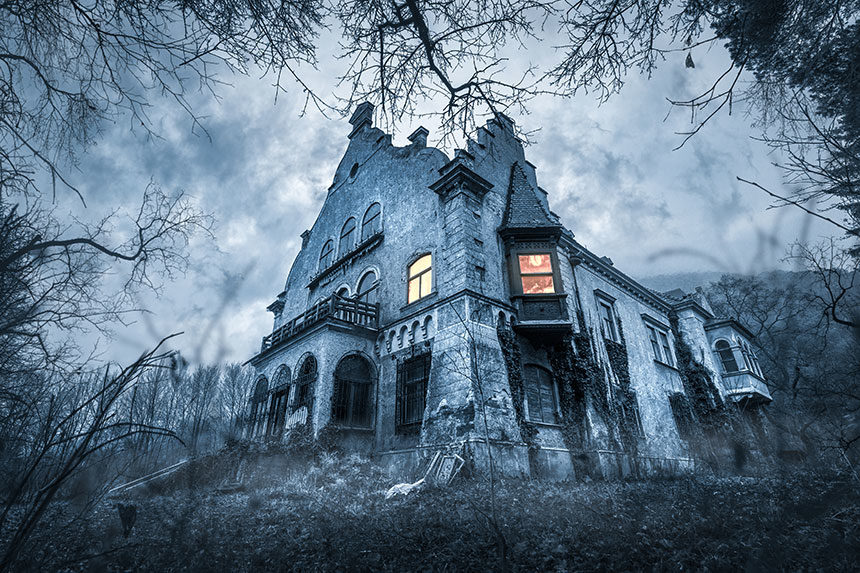It’s appropriate that one of the classic makers of horror film is virtually unkillable. Many have tried, but just when you think that Hammer is down, it emerges from the shadows and grabs you. Now, 65 years after the birth of the horror brand and 50 years to the day of the release of one of its classic Dracula films, Taste the Blood of Dracula, it’s time to look at why Hammer Horror will never really die.
Hammer Film Productions’ early years didn’t rush right into horror. Founded in London in late 1934 by William Hinds, the company was named after Hinds’s own stage name, Will Hammer. The studio’s first film, The Public Life of Henry the Ninth, was a comedy. Other films of a variety of genres followed. Hinds co-founded a distributor, Exclusive. Unfortunately, due in part to the worldwide depression of the 1930s, the studio’s fortunes declined, and Hammer declared bankruptcy in 1937.
After World War II, Hinds’s son Anthony joined British film producer James Carreras to bring back Hammer as a production piece under Exclusive. They dove into crime and mystery films, and also licensed radio dramas from the BBC to turn into movies. In 1949, Exclusive made Hammer Film Productions a separate registered company and renamed their Wardour Street office in London “Hammer House.” By 1953, Hammer was making forays into science fiction, paving the way for a new phase that would cement their reputation forever.
The Quatermass Xperiment trailer (Uploaded to YouTube by Hammer)
In 1955, Hammer made The Quatermass Xperiment, based on the BBC TV serial The Quatermass Experiment by Nigel Kneale. The story dealt with a rocket returning to Earth with two astronauts missing and the third infected by something horrible. The film was a big hit, getting United Artists distribution in America (where it was named The Creeping Unknown), and giving Hammer some name recognition. While the Exclusive distribution part of the company would eventually fold now that big distributors were getting Hammer into theaters, they were primed for huge success. Audience polling said that they liked the horror aspects of the film even more than the science fiction parts, so Hammer went all in; three of its four 1956 films would be horror.
The trailer for The Curse of Frankenstein (Uploaded to YouTube by Movieclips Classic Trailers)
The most important of those 1956 movies was The Curse of Frankenstein. A new take on the Frankenstein story, which had produced a franchise for Universal in the 1930s and ’40s, the Curse of Frankenstein was filmed in color by director Terence Fisher, and he wasn’t afraid to show gore. That alone drew attention, but the two leads (Peter Cushing as Victor Frankenstein and Christopher Lee as the Creature) turned out to be horror icons in the making. Hazel Court cemented her status as a “horror queen” in the film as well, becoming the first of what would be a long line of popular Hammer horror heroines. The film was a massive hit in England, the rest of Europe, and the States. Sensing momentum, Hammer cranked out a sequel, The Revenge of Frankenstein, and launched another franchise with Dracula (released in the States as The Horror of Dracula).
The U.S. trailer for The Horror of Dracula (Uploaded to YouTube by Movieclips Classic Trailers)
Written by Jimmy Sangster (who had written the two Frankenstein installments to that point), directed again by Fisher, and again starring Cushing (as Van Helsing) and Lee (as Dracula), Dracula was another blockbuster for the studio. The film injected a more open sexuality into the vampire mythos than earlier films had been allowed to portray, and Lee’s charismatic turn as Dracula drew particular praise. The one-two punch of Frankenstein and Dracula set the table for Hammer as it had for Universal. Lee and Cushing became synonymous with horror films; Lee would become one of the most iconic genre actors in history, playing Dracula for Hammer seven times (and three times for studios in other countries). The year after Dracula, they teamed with Fisher again in Hammer’s adaptation of the Sherlock Holmes picture The Hound of the Baskervilles, with Cushing as Holmes and Lee as Henry Baskerville, and in The Mummy (again with Fisher and Sangster).
It wasn’t just the willingness to show gore or amped sexuality that made Hammer work. There was an overall style to the pictures that leaned on the Gothic and the otherworldly in a way that was different from the American films; the use of color was certainly a big part of that. Even if Sangster’s scripts weren’t always tremendous, Lee and Cushing elevated them with presence. In 1966’s Dracula: Prince of Darkness, Lee never even says a single word, simply owning the screen with the sheer force of his charisma.
The trailer for One Million Years B.C. (Uploaded to YouTube by Hammer)
Hammer’s run from the 1950s into the early 1970s was one of incredible success. The bedrock was the clutch of horror franchises centered around Cushing, Lee, and a parade of new actresses that would become sex symbols of the time, including Barbara Shelley, Ingrid Pitt, Caroline Munro, and Raquel Welch. Welch broke out in 1966 in Fantastic Voyage in the U.S., but Hammer’s One Million Years B.C. and its promotional poster of Welch in the deerskin bikini made her an international sensation. B.C. was one of many effects-driven science fiction and fantasy films that Hammer made concurrently to their big set of horror series. By 1979, with top-notch horror films from bigger studios pulling away their audience, financial obligations to production partners, and the loss of staples like Lee to other work (Lee wanted to avoid typecasting), Hammer stopped production.
The trailer for The Lodge (Uploaded to YouTube by ONE Media)
But no great horror story can stay buried forever. Various efforts to bring back the brand occurred over the decades, but Dutch producer John de Mol put together a deal in 2007 to do just that. He pulled together the rights to 300 Hammer films and restarted the studio. The new Hammer has put together international and U.S. co-productions, like 2011’s The Resident, 2012’s The Woman in Black, and 2010’s Let Me In, a remake of the modern Swedish vamprie classic Let the Right One In. Most recently, Hammer debuted The Lodge at the 2019 Sundance Film Festival and released it in the United States in February. With the general ongoing resurgence in horror-related box office, Hammer stands a chance of carving out a decent horror niche alongside other successful outfits of today, like Blumhouse. Their ongoing program of getting classics on Blu-ray while simultaneously producing new fare will keep them alive. Or, at least, undead.
Featured image: Shutterstock
Become a Saturday Evening Post member and enjoy unlimited access. Subscribe now



